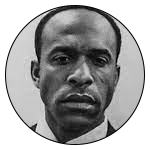 Demolition Report |
|
|
|
|
Israel forcibly displaces some 170 Palestinians from Ein Samiya Demolition Data
|
Destroying the native population's educational structures has always been an essential tactic of settler colonialism. For example, from 1869 through the 1960s United States — the most successful settler colonial regime — in coordination with various churches, oversaw the theft of hundreds of thousands of Native American children from their homes and families to boarding schools. Taking complete control of the indigenous educational structures in order to force assimilation was and continues to be a critical tool in eradicating indigenous communities.
In apartheid South Africa, when the white Afrikaner-dominated National Party took the reins of the white-led government, they spearheaded the establishment of racially segregated public facilities, mirroring the US Southern states during segregation. The 1953 Bantu Education Act centralized black education, bringing it under the national government's control. The successor of mission schools were publicly-funded institutions, predominantly financed by a tax levied on Black South Africans. The white settlers intentionally underfunded the indigenous schools, driving them into the ground. By the 1960s, a mere 10 percent of Black educators had high school diplomas, and by 1967, the student-teacher ratio ballooned to 58 to 1.
As a settler colonial project, Israel has followed the playbook of other settler projects like the United States and South Africa. Right now, nearly 7,000 young Palestinian children across 57 schools are under imminent threat of having their schools demolished. Israel's policy of destroying indigenous infrastructure, such as schools, clinics, agricultural facilities, and homes, is enacted to force the indigenous Palestinian population to flee or be displaced into the ethnic enclaves of Area A and Area B, a typical feature of settler colonial structures.
Through the policy of demolishing indigenous infrastructure, Israel and the Zionist movement have destroyed 170 Palestinian structures so far this year. This campaign has affected over 12,000 Palestinians in the process, through the loss of livelihood, loss of income, food insecurity, and a myriad of health issues that comes with having the center of one’s life destroyed. This is a sharp increase compared to the 9,096 impacted last year from January 1 to June 6, 2022.
As Israel continues to escalate its methods of indigenous erasure, the movement for Palestinian liberation and justice abroad must continue to enact campaigns to dismantle the infrastructure underpinning the Zionist movement. We advocate for groups to not only to highlight the role that the nonprofits and charities play in advancing the settler movement, but actually file complaints and lawsuits and advance legislation that will halt the flow of money to these groups in Palestine. Go to defundracism.org to learn more.
|
|
|
|
|
| Data from January 1, 2023 to June 1, 2023. |
Donor
Funded |
Structures
Demolished |
Israeli
Operations |
| 53 |
388 |
170 |
|
|
Impact on Palestinian Lives
|
| Households |
110 |
1,998 |
Residential: 78 |
| People |
575 |
12,281 |
Agricultural: 118 |
| Males |
287 |
6,446 |
Livelihood: 56 |
| Females |
278 |
5,845 |
WASH: 27 |
| Children |
279 |
5,402 |
Infrastructure: 9
Others: 19 |
|
|
|
Settler Colonialism: The Basics
It's essential that the movement develops and pushes forward a shared understanding of what is happening in Palestine so that the modes of liberation can be effectively articulated and enacted. Contrary to much of the popular narrative, this is, in fact, not a conflict. Like all the other indigenous peoples that have resisted imperialism and colonialism, Palestinians are also, in the same way, resisting the conquest of foreign entities. When moving away from the misleading Zionist narrative of "conflict" and into a paradigm of indigenous resistance to settler colonialism, it's important to look at some of the key features of settler colonialism. Here are five features of Zionist settler colonialism:
1. Displacement of Indigenous Peoples: This is a central feature of settler colonialism. Settlers displace the original inhabitants of a land, often through force, policies, and laws. The structures that enable this include legal apparatuses, like the Doctrine of Discovery used by European settlers in the Americas, which provided a 'legal' justification for their claims to indigenous lands. In the case of Israel, it's the political movement of Zionism and its apologists, as well as the laws created by the state itself, that provide this ideological and legal structure.
2. Permanence: Unlike other forms of colonialism, settler colonialism aims for the permanent settlement of the colonizers in the colonized land. The structures enabling this are often physical, including homes, farms, roads, and cities built by the settlers, establishing their permanent presence and contributing to the erasure of indigenous cultures. This has manifested itself in the Israeli settlements of places like Hebron, and Gush Etzion. It's important to understand that in this context, Tel Aviv, Petah Tikvah, and Holon are settlements in the same way that Ariel and Yitzhar are, even though they aren't in the West Bank.
3. Economic Exploitation: Settler colonialism involves the exploitation of the land and its resources for the economic benefit of the settlers. The structures involved can be economic institutions and corporations, set up to control and profit from the resources, often including farming, mining, and other extractive industries. In the Palestinian case, this also includes the myriad of ways Israeli corporations, such as the arms industry, have used the situation of colonization to test out weapons and surveillance technology on Palestinians and then sell them to oppressive regimes across the world to suppress other movements of justice.
4. Cultural Assimilation: Settlers often attempt to assimilate indigenous peoples into their culture. This involves the erasure of indigenous identities, traditions, languages, and customs. Institutions like schools and churches often act as structures that work to assimilate indigenous peoples into settler cultures. But this also happens in other nefarious ways. For instance, some Palestinians have been co-opted into Zionist organizations. Some of these Zionist organizations advocate for Israel on the world stage, advance legislation for continued military aid to the Israeli state, and help facilitate the settlement of more settlers into Palestine. Most Palestinians would not work with these groups. Yet, we see liberal Zionist groups like J Street and the Center for Jewish Nonviolence. For a long time, J Street has been a staunch opponent of BDS and the Center for Jewish Nonviolence has facilitated dinner parties for representatives of the World Zionist Organization in some of the villages in South Hebron. Both of these organizations hand-pluck Palestinians who will forgo the language of settler colonialism, resistance, and liberation for the opportunity to travel abroad and receive donations — thus undermining intra-Palestinian solidarity. It's important for people to remember that the Israeli state isn't just undermining Palestinian identity and cohesion — Zionist “solidarity” groups do this as well.
5. Structural and Systemic Racism: Settler colonialism is inherently a racial project, which results in systemic racism against indigenous peoples. This is embedded in societal structures, including the legal system, policing, and social services, and it manifests as racial profiling, discrimination, and disparities in wealth, health outcomes, education and most importantly — freedom.
These features and structures overlap and intersect in many ways, highlighting the multifaceted impacts of Zionist settler colonialism on indigenous Palestinians. It's critical to remember that while settler colonialism has historical roots, it is alive and active today. It is not in the past.
click here for webversion
|
|
|
 Good Shepherd Collective
Good Shepherd Collective
|
Defund Racism
|
|
 “For a colonized people the most essential value, because the most concrete, is first and foremost the land: the land which will bring them bread and, above all, dignity.”
“For a colonized people the most essential value, because the most concrete, is first and foremost the land: the land which will bring them bread and, above all, dignity.”
― Frantz Fanon, The Wretched of the Earth
|
 Beit Sahour, Palestine
Beit Sahour, Palestine
|
|
|
|
|
|